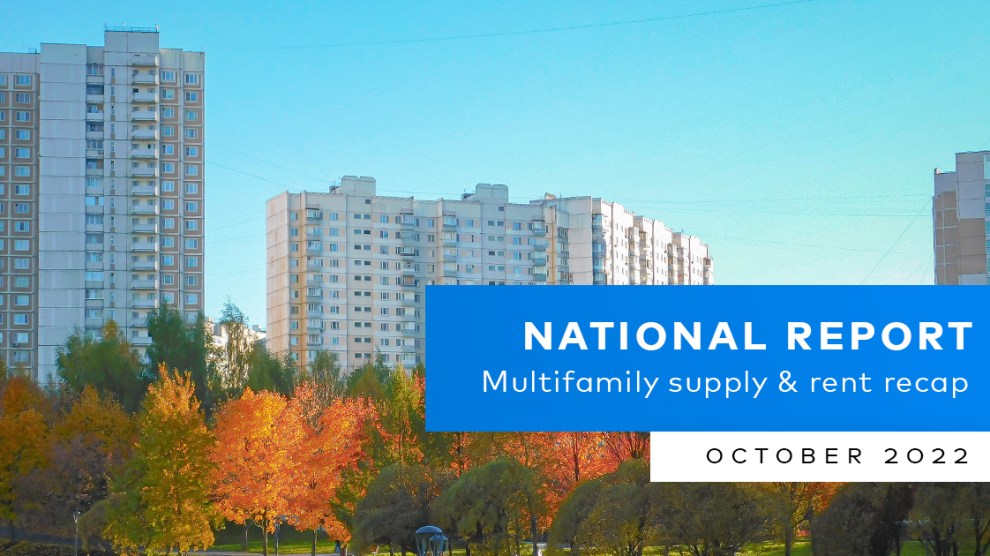Rent Growth Deceleration Continues as RBN Segment Still Grows
Annual rent growth fell to the lowest level since the summer of 2021.
Report highlights:
- Rent growth continues to decelerate at the start of the final quarter of 2022; the average asking rent gained $3 in October, to $1,727, an 8.2% year-over-year increase.
- The national occupancy rate in stabilized assets dropped another 50 basis points, to 95.5% in September.
- Rent growth is sustained exclusively by the Renter-by-Necessity segment (up 0.4%); Lifestyle rents remained unchanged.
- Rent growth in the SFR market is also decelerating—up 6.6% year-over-year in October, to $2,088; occupancy stood at 96.1% in September, following a 130 basis-point decrease.
Interest rates hikes moderate rent growth
Rent growth continued to soften, rising 8.2% year-over-year through October, 130 basis points below the September rate. This constitutes a $3 uptick, to $1,727. Of Yardi Matrix’s top 30 metros, 25 had recorded year-over-year rent growth of 5% or more, while the top-ranking metros posted still double-digit rent increases—Indianapolis (11.8%), Orlando (11.6%), Miami (11.4%), San Jose (10.6%) and Dallas (10.5%).
Rapid growth in interest rates continues to dampen demand, slowing investment and construction activities. However, another effect of the rise in interest rates means that potential first-time homebuyers are being kept in rentals, maintaining multifamily activity.
Renter-by-Necessity segment sustains rent growth; Lease renewals slide
On a monthly basis, the average U.S. asking rent rose 0.2% in October, thanks to a 40-basis-point increase of the average rent in the Renter-by-Necessity segment. Lifestyle rents remained flat. Overall, leading metros in month-over-month rent growth were New York (0.8%), Indianapolis (0.7%), Kansas City (0.6%) and Portland (0.5%). Of Yardi Matrix’s top 30 metros, 16 registered contractions in the Lifestyle category, led by Las Vegas (-0.8%), Sacramento (0.6%) and the Inland Empire (-0.5%), and four metros saw contraction in the Renter-by-Necessity segment.
National lease renewals continued to slide from the 68.0% peak in the fourth quarter of 2021, to 60.2% in September, which points to weakening demand and decreasing affordability levels. Leading ranks were Philadelphia (73.8%), Kansas City (67.9%) and Baltimore (66.9%), and lowest ranking metros were Los Angeles (41.6%), San Francisco (43.1%), San Jose (43.9%) and Seattle (50.2%). Meanwhile, renewal rents increased 10.9% year-over-year through September, 10 basis points below the August rate. These too are expected to moderate, as renewal rents are rising faster than overall rent growth.
Single-Family Built-to-Rent segment softens
The asking rent for the single-family rental sector rose 6.6% year-over-year through October, to $2,088, 120 basis points drop from September. The occupancy rate was also down 130 basis points year-over-year in September, but remained above the 96% mark.
SFRs will likely benefit from the recent commotion in the housing market, as with mortgage rents above 7%, many prospective homebuyers will be forced to remain in the rental markets. According to a National Association of Realtors survey, first-time homebuyers accounted for just 26% of all home sales in the year ending in June.
Read the full Matrix Multifamily National Report-October 2022











Add Comment